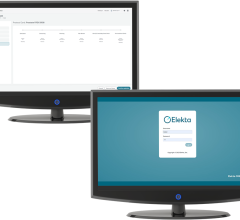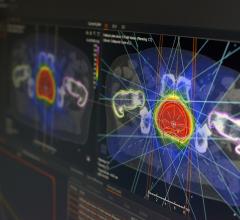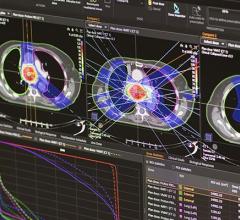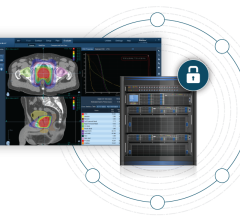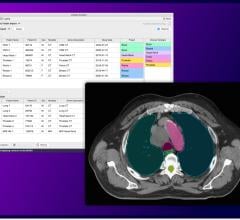
Catharina Hospital
Recently, the oncology department needed to update its radiation therapy treatment planning system. The department carried out an extensive assessment of possible systems before selecting RayStation, and key requirements included fast calculation speed, support for multimodality imaging and adaptive planning capabilities. The RayStation configuration comprises 10 planning and 10 contouring workstations and licenses for 3DCRT, IMRT and VMAT planning, multi-criteria optimization (MCO), deformable image registration, dose tracking and adaptive replanning.
Extending Clinical Possibilities
Tom Budiharto, radiation oncologist at Catharina Hospital, said RayStation has given the department new treatment possibilities.
“We are able to treat a wider variety of cases,” he said. “For example, we can now treat with a higher dose while maintaining clinical goals, which is excellent for cases such as higher stage lung cancer. RayStation’s MCO has potential for exploring different treatment possibilities and evaluating the advantages and disadvantages of potential trade-offs, such as the need to balance conformity with sparing of organs at risk. It could save significant time and opens up for plans that might not have been considered. Speed is another important aspect, and we were limited by the calculation speed of the previous system. RayStation’s speed improves the workflow and is a critical factor for adaptive therapy.”
Adaptive planning is a key strength of RayStation and an important factor for Catharina Hospital. “RayStation gives us lots of possibilities for evaluation and adaptation of treatment throughout the course,” Budiharto said. “It supports, for example, approaches such as delivering fewer treatments but at a higher dosage, where adaptation is very important. It is also easier to create a new plan for an existing patient, and the workflow is much more straightforward. RayStation lowers the threshold to achieving better treatment plans.”
A Smoother Workflow
Marjon Janssen-Reinders, team leader treatment preparation RT, highlights the value of RayStation’s automation capabilities. “The possibility to use scripts was a key factor in our choice of RayStation,” she said. “The scripting capability is excellent and gives us many new possibilities.”
Workflow, she added, is another area that was significantly improved. “Today we have a much more manageable workflow. If we add a new protocol, for example, we no longer need to write every individual script. We have a framework and the RTTs can write templates themselves.
“Another great improvement is the ability to look at clinical goals instead of checking all DVHs and finding out the values,” she continued. “It’s easy to check whether a plan is in line with goals and to generate a report for the clinical records. Previously, there was a lot of manual transcription.”
IT Platform Compatibility
In addition to the requirements for high performance, the department also wanted a system that would be compatible with the VMware Horizon virtual desktop platform, which is used across the hospital. Furthermore, they intended to make an overnight shift to the new system rather than phasing it in.
Danny Schuring, medical physicist at Catharina Hospital, was confident about the transition. “We had carefully evaluated the functionality we needed, and I was convinced that RayStation was the best option. When testing the system, we were impressed by how fast it was, but also by its user-friendliness. I sat behind the screen without having to read the manual, and within 15 minutes I had a workable treatment plan!”
The implementation process was rapid. The project started in February 2016 and the hospital went clinical with RayStation on Nov. 21, 2016.
“We treated the last patient with the old system on a Friday,” Schuring said. “On Monday morning, we switched to RayStation, and we have used it for every subsequent treatment. Of course, there was a learning curve for us in the first couple of weeks, but we were able to keep to our schedule — one week between planning CT and start of the treatment — without postponing any patient treatments.
Flexible Workspaces
Three years ago, Catharina Hospital began introduction of the VMware Horizon virtual desktop platform, which is now used across all departments. RaySearch was the only supplier that could work with this infrastructure. Users can run RayStation with full functionality, including the system’s advanced GPU functionality, on any device.
“Flexible workspaces were important to the solution,” Schuring said. “We wanted access to our treatment plans in the office, in the planning room and when consulting with the patient. We were very happy that RaySearch could immediately agree to support this setup.”
One of the biggest surprises, Schuring added, was the lack of surprises. “There were no real issues,” he said. “The planning was very thorough, and there was an excellent collaboration between RaySearch and our IT department. So when it came to the installation phase, everyone was well prepared. RayStation fit perfectly into our IT environment. Support is one of the key things we look at when choosing a supplier, and RaySearch has been outstanding. This kind of attention to detail makes everyday use smoother and easier.”
Case study supplied by RaySearch.


 April 18, 2024
April 18, 2024 


